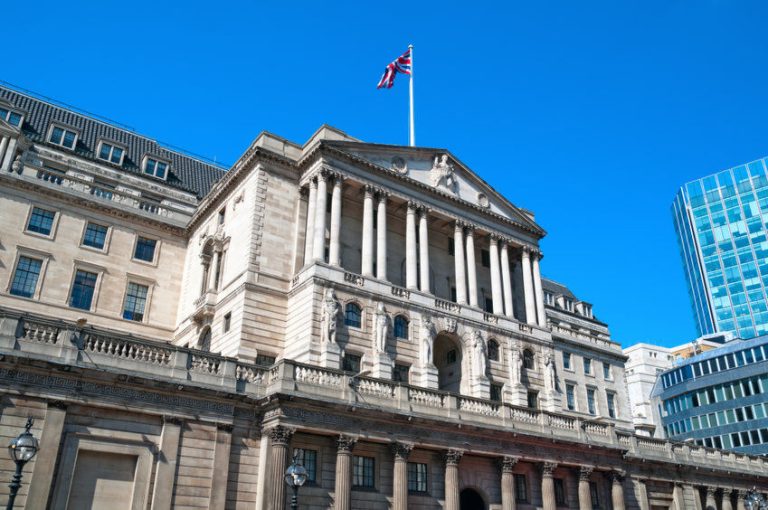With the US Federal Reserve slashing rates by 50 bps, analysts in India have begun to weigh in on whether whether the Reserve Bank of India (RBI) will follow suit or maintain its focus on domestic inflation management.
The US Federal Reserve has announced a 50-basis-point cut in its benchmark interest rate, reducing it to 4.75%–5.00%, marking the first rate reduction in four years.
The decision, unveiled on September 18 following the Fed’s sixth policy meeting of 2024, aligns with Wall Street forecasts and reflects a shift in focus from combating inflation to supporting a weakening job market.
Analysts in India agree that the Indian central bank will be led more by domestic macro dynamics like inflation and risk management to follow in the Fed’s footsteps, however, they differed on the timelines.
An October rate cut by RBI possible: Geojit Financial Services
V K Vijayakumar, Chief Investment Strategist at Geojit Financial Services said the Fed’s action sets the stage for potential rate cuts by the Reserve Bank of India (RBI).
Vijayakumar suggested that two rate cuts of 25 basis points each could occur by the end of March next year with the first expected to take place as soon as October.
He said,
A rate cut by the RBI in October is possible. Two independent Monetary Policy Committee (MPC) members have already argued for rate cuts because Q1 signals are not very positive. The earnings growth in Q1 was not impressive, and some downgrades indicated signs of weakness in certain areas of the economy. CPI inflation has eased significantly, and it is expected to be around 4%.
RBI’s response may be delayed until December, says Emkay
Emkay analysts opined that the Fed’s rate cut marked the start of a new easing cycle, but its mixed messaging has left markets uncertain.
According to Madhavi Arora, chief economist at Emkay Global Financial Services, while markets were heavily pricing a 50bps cut, this was still a surprise, as the Fed usually provides clear signalling before making
an outsized cut.
Arora said that overall, the contradiction between starting the easing cycle with an outsized cut while maintaining that the economy is in good shape was a difficult one for Powell to justify.
“While we were never in the recession camp, a significant slowdown is already underway (as evident through recent labor data), and the pace of this slowdown will dictate the pace of rate cuts going ahead,” she said.
Markets are pricing in ~60bps of easing for 2024 and ~150bps for 2025 –significantly more than the Fed’s projections.
For India, Emkay’s experts suggest that the RBI is likely to maintain a cautious stance, with a potential rate cut on the horizon by December.
Arora said with the global market reaction having been muted thus far, the RBI still has flexibility to remain focused on domestic inflation and risk management, albeit there are over 20 days before its next MPC meeting.
She said,
The RBI is likely to maintain its wait-and-watch stance and focus on being ‘actively disinflationary’, with a first rate cut likely by December. A case for an early cut is still less likely, and we continue to see shallow
cuts by both Fed and the RBI in this cycle.
India’s rate cut not before Q4FY25: Prabhudas Lilladher
Prabhudas Lilladher added a more focused view on India’s likely response to the US Fed’s decision, underscoring the divergence between global trends and local economic dynamics.
Drawing comparisons to the post-Global Financial Crisis (GFC) era of 2013-18, Arsh Mogre, economist, institutional equities, PL Capital suggested that the RBI has shown independence from global rate cycles in favour of managing inflation and economic stability.
Mogre said,
The Fed’s projections show a potential further 50 bps cut in 2024 and an additional 100 bps in 2025, marking a prolonged easing cycle…However, the RBI may not follow the Fed’s aggressive easing as India’s rate cycle has historically been driven by domestic macro dynamics, as seen during 2013-18 when the RBI moved independently to control inflation and manage economic stability post-GFC stimulus.
This divergence reflects that India will cut rates only if domestic weaknesses emerge, and not merely in reaction to global rate cycles, he added.
Mogre emphasized that India’s robust macroeconomic fundamentals, inflation under control and a manageable current account deficit, allow the RBI to focus singularly on inflation management.
“The RBI’s rate decisions will be influenced by a durable alignment of inflation toward its 4% target, but food prices remain volatile, pushing a rate cut by the RBI to Q4 FY25,” he said.
What about foreign inflows?
Historically, a rate cut in developed markets triggers a fund flow into emerging markets. With a rate cut of 50 bps, return on fixed income is likely to drop in the US, making emerging markets like India attractive.
Vijayakumar pointed out that foreign institutional investors (FIIs) have been cautious about investing in India due to its high valuations.
However, with limited alternatives and the federal funds rate projected to remain around 3.4% by the end of 2025, more capital is expected to flow into emerging markets, where India stands out with the best growth prospects, he said.
Market expert Ajay Bagga’s views resonated with Vijayakumar’s:
EMs should see continued and growing inflows from global funds seeking returns. India is well positioned, with a strong macro, with monetary space to cut rates, with good corporate earnings and a vibrant primary market, to garner a fair share of the incremental foreign flows here on.
Government officials however downplayed the impact. Chief Economic Advisor V. Anantha Nageswaran said the impact of the Fed’s rate cut on India would be “muted” as much of the effect had already been priced into the markets.
India’s department of economic affairs (DEA) secretary Ajay Seth Seth told Moneycontrol that the foreign portfolio investment (FPI) into India is not expected to undergo a major shift, and the situation will not need close monitoring to ensure market stability.
Gold, rupee and broader forecast for India
One of the immediate effects of the Fed’s rate cut has been a stronger Indian rupee.
The rupee strengthened to 83.6 against the dollar following the Fed’s announcement, a reaction that reflects broader market optimism about India’s economic prospects in the face of global monetary easing.
Mogre pointed to the benefits for Indian asset classes like gold, which tends to perform well during periods of monetary easing.
“Additionally, Indian corporates may increase their use of cross-currency swaps to take advantage of lower U.S. interest rates, helping to reduce borrowing costs,” he said.
Looking ahead, Indian markets are expected to benefit from the Fed’s easing cycle, particularly if foreign institutional investors (FIIs) ramp up their investments.
With strong macroeconomic fundamentals, India is well-positioned to attract incremental foreign flows, especially into sectors like real estate, non-banking financial companies (NBFCs), and infrastructure.
However, caution remains. The volatility surrounding the US presidential election in November could lead to temporary fluctuations in global markets, including India.
Bagga acknowledged this, pointing to the historical tendency of U.S. stock markets to weaken before elections and rally afterward.
The post With Fed cutting rate, will the RBI follow suit? Analysts weigh in appeared first on Invezz









